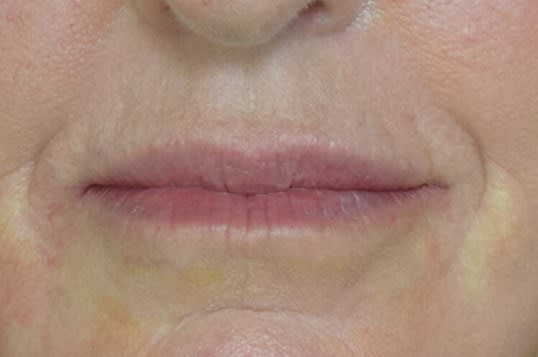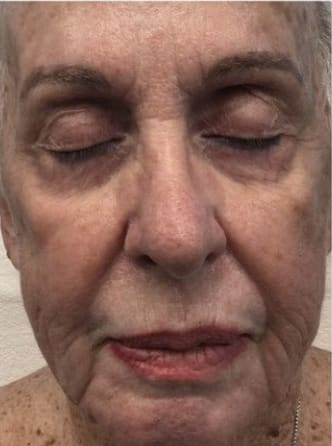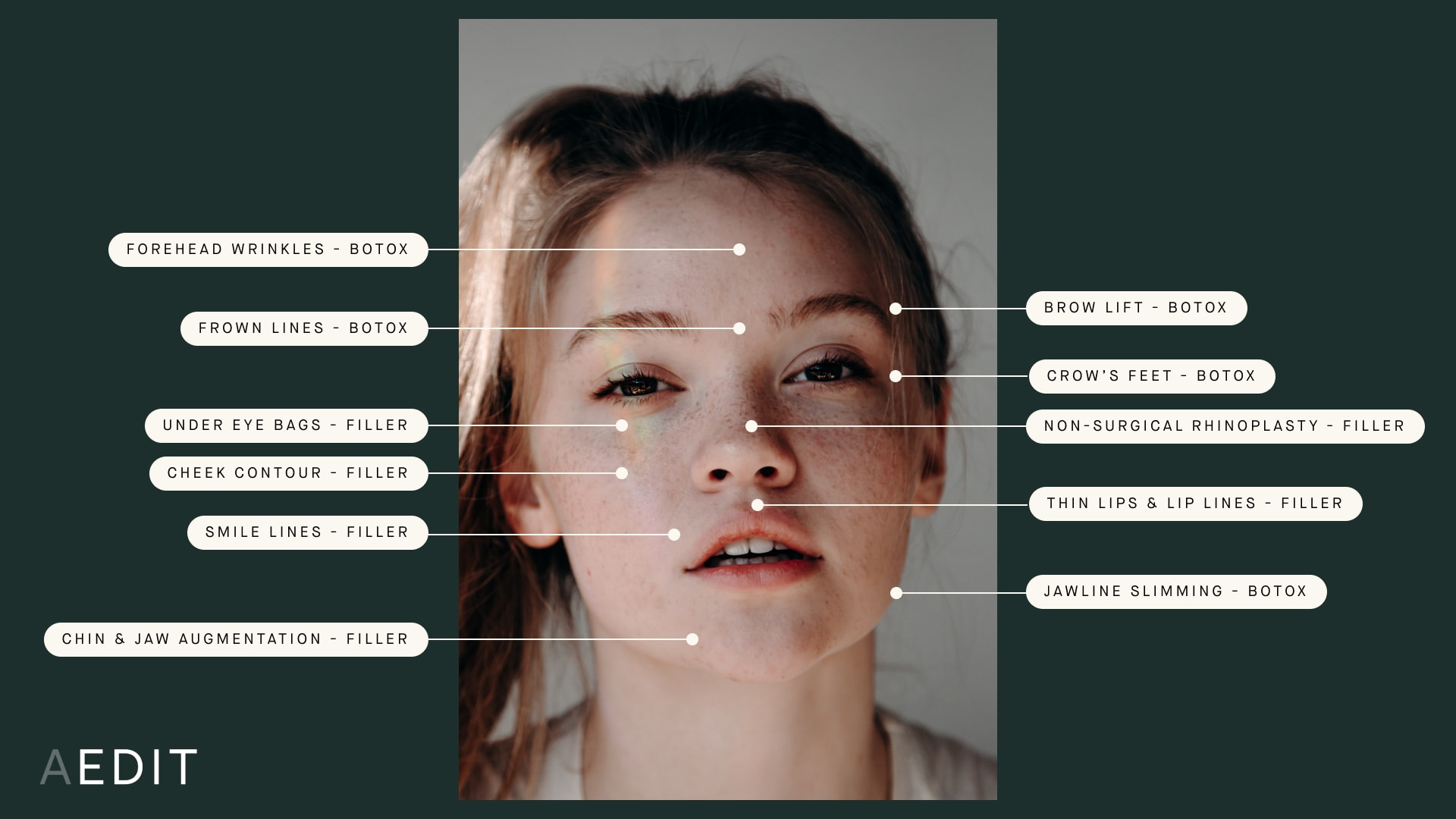
The Skinny
AEDIT
Before & After Images by Provider












Before & After Images by Provider
Dermal Filler & Injectable Solutions
The Specifics
Who may consider dermal fillers and injectables?
A quick recap of the special names for the fine lines, wrinkles, and creases that develop on the face from aging, use, sun exposure, and skin damage. Bonus points if you have all of them.
What can you expect from dermal fillers and injectables?
Soft tissue fillers versus Botox®: What’s the difference? Well, one is a synthetic augmentation solution, while the other is a naturally occurring paralytic toxin.
Where to Use Neurotoxin vs. Dermal Filler:

When should you consider dermal fillers and injectables for fine lines and wrinkles?
That’s entirely up to you. Fine lines and wrinkles happen to everyone at different times with varying degrees of intensity. When you begin to notice the appearance of fine lines and wrinkles, you can consider what your ideal aesthetic is and then decide how you wish to proceed. All of the options discussed here are temporary, and will require maintenance regardless of when you begin treatments.
Why should you consider dermal fillers and injectables for fine lines and wrinkles?
A few reasons one may consider a dermal filler or injectable to smooth fine lines and wrinkles: to stick it to Father Time, to defy gravity, to permanently erase the past, to celebrate advances in modern cosmetic procedures, or to confuse casual acquaintances into thinking you are immune to aging.
Neurotoxin Injections
Botulinum toxin type A (BoNT-A) injections can smooth fine lines and wrinkles by blocking neurotransmissions to the underlying facial musculature preventing it from contracting. Below is a general overview of common types of BoNT-A injections.
Soft Tissue Fillers
These can be temporary or permanent depending on the filler. They generally have minimal side effects with noticeable results.
Hyaluronic Acid (HA) Fillers
The most temporary of the filler options, hyaluronic acid (HA)-based fillers are approved by the United States Food and Drud Administration (FDA) to treat an array of wrinkle and volume-related skin concerns.
Calcium Hydroxylapatite Fillers (CAHA)
Calcium hydroxylapatite (CAHA) is similar to a mineral and is naturally found in human bones. The most common brand of CaHA filler is Radiesse®, which is used for enhancing volume on the face and bodyand plumping frown lines.
Poly-L-lactic Acid (PLLA) Filler
Poly-L-lactic acid (PLLA) is a biodegradable synthetic substance that is classified as a collagen stimulator because it helps the skin rebuild collagen on its own. The filler itself dissolves after a few days, but the results generated by the increased collagen production can last over two years.
Polymethylmethacrylate (PMMA) Fillers
Polymethylmethacrylate (PMMA) fillers are a semi-permanent solution used to treat medium-to-deep lines, wrinkles, and furrows. The most popular PMMA brand is Bellafill®, which is used to treat nasolabial folds, pitted scars from acne, and lips.
The Takeaway
Injectable treatments are simple, safe, and effective. Fine lines and wrinkles stand no chance against these cosmetic procedures. With minimal recovery time, reasonable cost, and significantly noticeable results what the heck are you waiting for?






